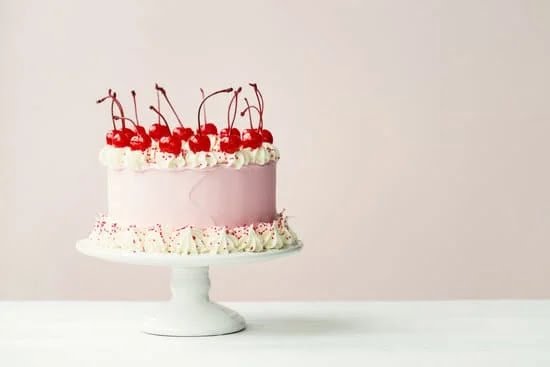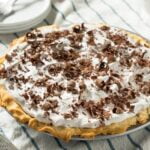Cake pops have become a beloved dessert trend, offering a delightful combination of cake and icing in a convenient bite-sized treat. Whether for special occasions or everyday indulgence, their popularity continues to grow. However, once these delectable treats are beautifully decorated, the question arises: how to store cake pops after decorating? Proper storage is crucial to maintaining their freshness and flavor.
In this comprehensive guide, we will delve into the world of cake pops and explore the best practices for storing them after decorating. From choosing the right packaging materials to deciding between refrigeration and room temperature storage, we will provide valuable tips and tricks to ensure that your cake pops remain delicious and visually appealing. Additionally, we will discuss freezing as an ultimate preservation method and offer techniques for preventing design disasters during storage.
As we take you through each step, our aim is to equip you with the knowledge and expertise needed to master the art of cake pop storage. So whether you are preparing for a special event or simply looking to savor your homemade creations over time, our expert suggestions and recommendations will guide you towards successful cake pop storage. Let’s dive into the world of cake pops and unravel the secrets to keeping them fresh and delicious after decorating.
Choosing the Right Packaging
When it comes to storing cake pops after decorating, choosing the right packaging is crucial to maintaining their freshness and visual appeal. The type of packaging you select can make a significant difference in how long your cake pops stay delicious and look their best. Here are some tips and tricks for selecting the best packaging options for your decorated cake pops.
One of the most popular choices for packaging cake pops is clear cellophane bags. These bags allow the decorations on the cake pops to remain visible while also protecting them from dust and other contaminants. Additionally, using twist ties or ribbons to seal the bags can add a decorative touch to your presentation. Another option is using small plastic containers with lids, which provide added protection for the cake pops during storage and transportation.
It’s important to consider the size of the packaging in relation to the size of your cake pops. The packaging should not be so tight that it damages the decorations or causes them to smudge, but it should also not be excessively loose, as this can lead to air exposure and potential staleness.
Additionally, considering whether you will be transporting the cake pops will help determine the best packaging option; sturdier containers might be necessary if they will be moved around frequently.
Finally, when selecting packaging materials, it’s essential to choose options that are food-safe and appropriate for maintaining freshness. Ensure that any bags or containers you use are free from harmful chemicals and have proper seals to keep air out. By choosing the right packaging for your decorated cake pops, you can help ensure that they stay fresh, visually appealing, and delicious for as long as possible.
| Packaging Options | Tips |
|---|---|
| Clear cellophane bags | Use twist ties or ribbons for a decorative touch |
| Small plastic containers with lids | Provide added protection during storage and transportation |
Refrigeration vs Room Temperature
When it comes to storing cake pops after decorating, one of the key decisions to make is whether to refrigerate them or keep them at room temperature. Each option comes with its own set of pros and cons that can impact the freshness and flavor of the cake pops.
Refrigeration Benefits
Refrigerating cake pops can help prolong their shelf life, keeping them fresh for a longer period of time. This is especially beneficial if the cake pops are made with perishable items such as cream cheese frosting or fresh fruit fillings. The cold temperature of the refrigerator also helps to solidify any coatings on the cake pops, such as chocolate or candy melts, making them less prone to melting or smudging.
Refrigeration Drawbacks
However, refrigeration can also have its drawbacks. Moisture from the refrigerator can cause condensation to form on the surface of the cake pops, leading to a soggy texture or causing decorations to run. Additionally, if not properly sealed in an airtight container, cake pops can absorb other food odors from the refrigerator, affecting their flavor.
Room Temperature Advantages
Storing cake pops at room temperature can help maintain their texture and prevent any potential moisture-related issues. Cake pops stored at room temperature are also less susceptible to absorbing other food odors since they are kept in a controlled environment. Additionally, room temperature storage allows for easy access and presentation of the cake pops without having to wait for them to come up to temperature before serving.
while both refrigeration and room temperature storage have their advantages and disadvantages when it comes to storing decorated cake pops, it’s important to consider the specific ingredients used in the cake pop recipe and decoration. By understanding how different storage methods can impact the quality of your cake pops, you can make an informed decision on how best to store them after decorating according based on your specific needs and preferences.
Freezing Cake Pops
When it comes to preserving the freshness and flavor of decorated cake pops, freezing is one of the most effective methods. Freezing cake pops not only extends their shelf life but also helps in maintaining their texture and taste. However, the process of freezing cake pops requires careful attention to ensure that they remain as delectable as when they were first made.
Detailing the Freezing Process
The first step in freezing cake pops after decorating is to allow them to completely set at room temperature. Once the decorations and coatings have hardened, carefully place each cake pop on a baking sheet lined with parchment paper, making sure they are not touching each other.
This will prevent them from sticking together during the freezing process. Then, place the baking sheet of cake pops in the freezer for about 15-20 minutes to firm up before transferring them into an airtight container or resealable plastic bag.
Thawing Frozen Cake Pops
When it’s time to enjoy your frozen cake pops, it’s important to thaw them properly to maintain their texture and taste. To thaw the frozen cake pops, simply transfer them from the freezer to the refrigerator and let them thaw overnight.
This gradual thawing process will help prevent any condensation from forming on the surface of the cake pops, which could potentially ruin their decorations. Avoid thawing frozen cake pops at room temperature or using a microwave, as these methods can affect their quality.
Tips for Successful Freezing
To ensure successful freezing of decorated cake pops, it’s essential to use high-quality airtight containers or resealable plastic bags. Make sure to label and date your frozen cake pops to keep track of their freshness.
Additionally, consider placing a layer of parchment paper between each layer of cake pops in the container or bag to prevent any damage to their decorations during storage. By following these tips and techniques for freezing cake pops after decorating, you can enjoy delicious and visually appealing treats anytime you desire without compromising their quality.
By understanding how to properly freeze and thaw decorated cake pops, you can confidently prepare and store these delightful desserts for special occasions or everyday enjoyment.
Keeping Decorations Intact
When it comes to cake pops, the decorations are just as important as the taste. After you’ve put in all that hard work decorating your cake pops, it’s crucial to store them properly to prevent any design disasters. So, how to store cake pops after decorating to maintain their visual appeal? Here are some techniques for keeping decorations intact and preventing any mishaps during storage.
One important tip for keeping your cake pop decorations intact is to ensure that they are completely dry before storing them. If the decorations haven’t fully set, they may smudge or stick to the packaging. To avoid this, allow your decorated cake pops to air dry completely before packaging them.
Another key aspect of preserving the design of your cake pops is choosing the right packaging. When storing decorated cake pops, it’s best to use airtight containers or clear favor bags with twist ties. These options help protect the decorations from getting damaged while also keeping the cake pops fresh.
In addition, when transporting or storing your decorated cake pops, be mindful of their placement. If using containers, make sure they are not too crowded together, as this can cause the decorations to rub against each other and potentially smudge. It’s also essential to keep decorated cake pops away from direct sunlight and heat sources to prevent any melting or fading of the decorations.
| Technique | Tips |
|---|---|
| Allowing Decorations to Dry | Ensure decorations are completely dry before storing |
| Choosing Airtight Packaging | Use airtight containers or clear favor bags with twist ties |
| Mindful Placement | Avoid crowding and keep away from direct sunlight or heat sources |
Long-Term Storage Options
When it comes to planning ahead for special events, such as weddings, birthdays, or other celebrations, it’s essential to consider long-term storage options for your decorated cake pops. Proper storage is crucial in ensuring that the cake pops maintain their freshness and visual appeal until the day of the event. Here’s how to store cake pops after decorating for extended periods:
First and foremost, choosing the right packaging is key when planning for long-term storage of cake pops. Opt for airtight containers or food-safe bags that will prevent air and moisture from seeping in, which can lead to the cake pops becoming stale or losing their decorations. Consider using individual compartments within the packaging to prevent any potential damage to the decorations during transportation and storage.
When storing cake pops for an extended period, refrigeration is often the best option to maintain their freshness. However, it’s important to note that not all types of cake pops are suitable for refrigeration. For instance, while traditional cake pops can be refrigerated without issues, those with delicate decorations made of chocolate or fondant may suffer from moisture condensation in the fridge. In such cases, storing them in a cool, dry place at room temperature is a better alternative.
Another effective long-term storage option for cake pops is freezing. To do this properly, individually wrap each decorated cake pop in plastic wrap before placing them in an airtight container or freezer bag. Freezing helps preserve the moistness and flavor of the cake while also keeping the decorations intact.
When it’s time to serve the cake pops at the event, simply remove them from the freezer and allow them to thaw at room temperature before unwrapping. This method ensures that the cake pops retain their texture and taste without compromising on quality.
By carefully considering these long-term storage options and implementing proper packaging techniques, you can effortlessly plan ahead for special events while still maintaining the deliciousness and visual appeal of your homemade decorated cake pops.
Reviving Stale Cake Pops
It’s inevitable that at some point, cake pops may lose their freshness or become stale during storage. But fear not, there are ways to revive them and bring them back to their delicious state. Here are some methods for salvaging and reinvigorating stale cake pops:
1. Microwave Method: One quick way to soften stale cake pops is by using a microwave. Simply place the cake pop in the microwave for 10-15 seconds to help soften the outer layer without melting the decorations. Be mindful not to overdo it as this can cause the cake pop to become too soft or even melt.
2. Refresh with Frosting: Another method to revive stale cake pops is to add a thin layer of fresh frosting or melted chocolate over the surface of the pop. This not only helps moisten the cake inside but also adds an extra layer of flavor.
3. Repurposing and Baking: If your cake pops are beyond revival, consider repurposing them in other dessert recipes such as trifles, parfaits, or even as crumbled toppings for ice cream sundaes. Alternatively, you could crumble them up and use them as the base for a new batch of cake pops.
By utilizing these techniques, you can salvage and reinvigorate any stale cake pops that may have lost their freshness during storage. It’s always worth trying to bring them back to life before considering discarding them.
Now that we’ve covered reviving stale cake pops, let’s summarize all the key points and expert suggestions discussed throughout this article for successful storing after decorating.
Tips for Successful Storage
When it comes to storing cake pops after decorating, following expert suggestions can make all the difference in maintaining their freshness and presentation. Here are some top tips for successful storage of cake pops:
- Use airtight containers: Store cake pops in airtight containers to prevent exposure to air and moisture, which can cause them to become stale or lose their shape.
- Keep them cool: If the weather is warm, store cake pops in a cool location to prevent the chocolate coating from melting and decorations from smudging.
- Avoid direct sunlight: Keep decorated cake pops away from direct sunlight, as exposure to heat can cause the chocolate coating to melt and decorations to lose their vibrant colors.
Experts also recommend considering the type of packaging used when storing cake pops after decorating. Some of the best materials for packaging include:
- Cellophane bags: Ideal for individually wrapping cake pops, cellophane bags help retain their freshness while showcasing their decorative designs.
- Clear plastic boxes: These transparent boxes provide visibility while protecting decorated cake pops from damage and maintaining their visual appeal.
- Foil wrappers: When storing multiple cake pops together, foil wrappers can help maintain their shape and prevent them from sticking together or becoming damaged during storage.
Additionally, experts advise taking into account the ingredients and type of cake pop when deciding whether to refrigerate or store at room temperature. For example, cream cheese-based cake pops should be refrigerated due to their perishable nature, while basic sponge cake pops can be safely stored at room temperature.
Implementing these expert suggestions ensures that your beautifully decorated cake pops remain fresh and visually appealing until they are ready to be enjoyed. By understanding how to store cake pops after decorating properly, you can preserve their quality and deliciousness for any occasion.
Conclusion
In conclusion, properly storing cake pops after decorating is essential for maintaining their freshness and flavor. Whether it’s choosing the right packaging, deciding between refrigeration and room temperature storage, or even freezing cake pops for long-term preservation, there are various techniques to ensure the quality of these delightful treats. By following the expert tips and suggestions provided in this article, readers can master the art of cake pop storage and enjoy their homemade creations for longer periods.
One important aspect to consider is how to store cake pops after decorating in order to prevent any damage to their decorations. By using the right packaging materials and techniques, such as individually wrapping each cake pop or using airtight containers, decorators can preserve the visual appeal of their creations.
Additionally, understanding when it’s best to refrigerate or store at room temperature based on the type of cake pop and its ingredients can make a significant difference in maintaining their quality.
Finally, while proper storage methods can help prolong the freshness of cake pops, it’s also valuable to know how to revive stale ones or repurpose them in other dessert recipes. By applying these tips and techniques, readers can ensure that their decorated cake pops remain visually appealing and delicious over time.
In the end, mastering the art of cake pop storage is not only about preserving their taste but also about maintaining their aesthetic appeal for special occasions or events.
Frequently Asked Questions
Do You Refrigerate Cake Pops After Decorating?
Yes, it is recommended to refrigerate cake pops after decorating in order to help the decorations set and the cake firm up. This will also prolong the shelf life of the cake pops.
How Far in Advance Can I Make My Cake Pops?
You can make your cake pops as far in advance as 2-3 days before you plan to serve or sell them. Make sure to store them properly in an airtight container in the refrigerator to keep them fresh.
How Do You Store Cake Pops for Sale?
When storing cake pops for sale, it’s important to package them carefully to maintain their freshness and appearance. Place each cake pop in a clear plastic bag and seal it tightly, then display them in a cool area away from direct sunlight or heat sources. This will help preserve their quality for potential buyers.

Welcome to our cake decorating blog! My name is Destiny Flores, and I am the proud owner of a cake decorating business named Cake Karma. Our mission is to provide delicious, beautiful cakes for all occasions. We specialize in creating custom cakes that are tailored specifically to each customer’s individual needs and tastes.





